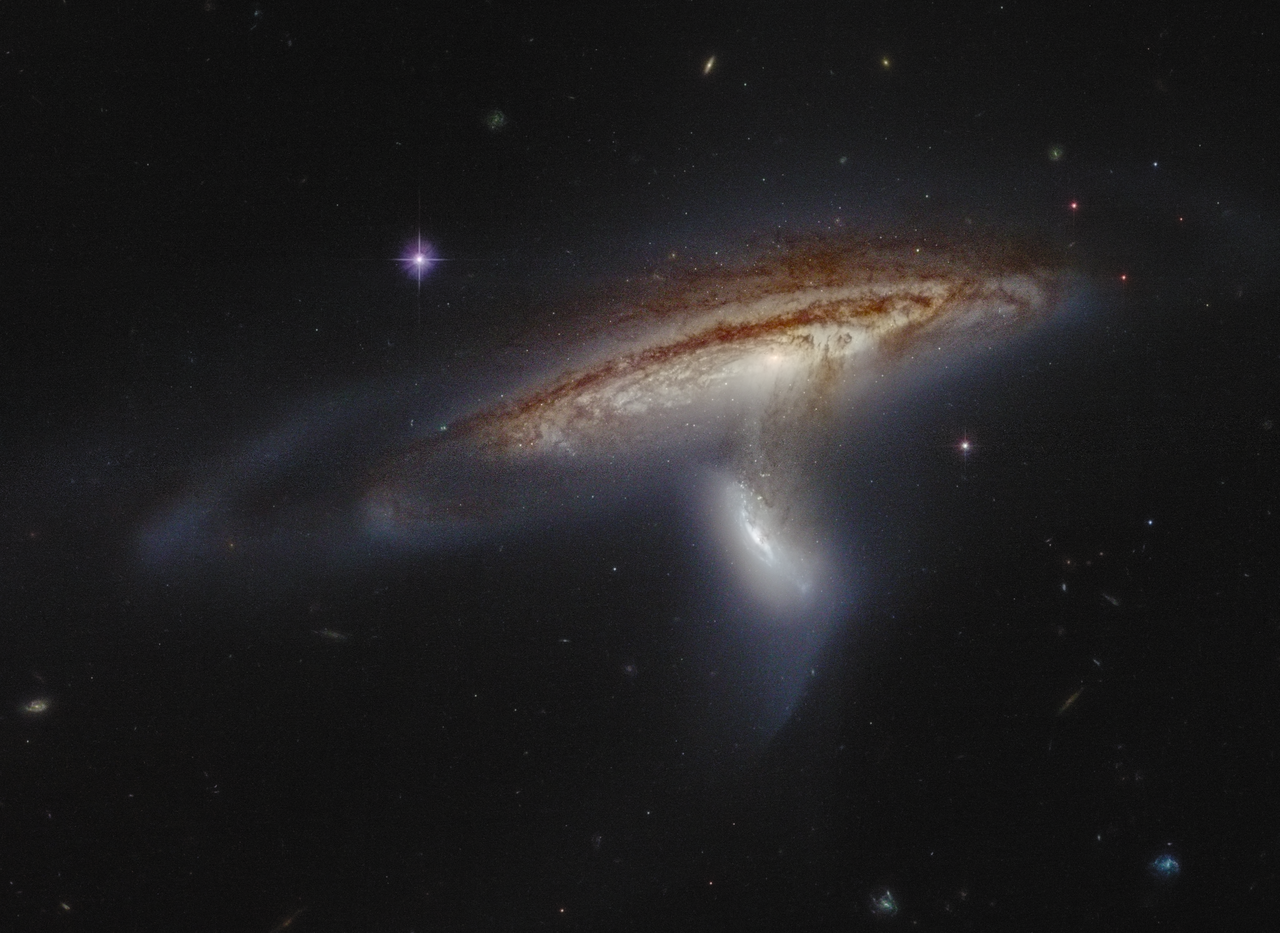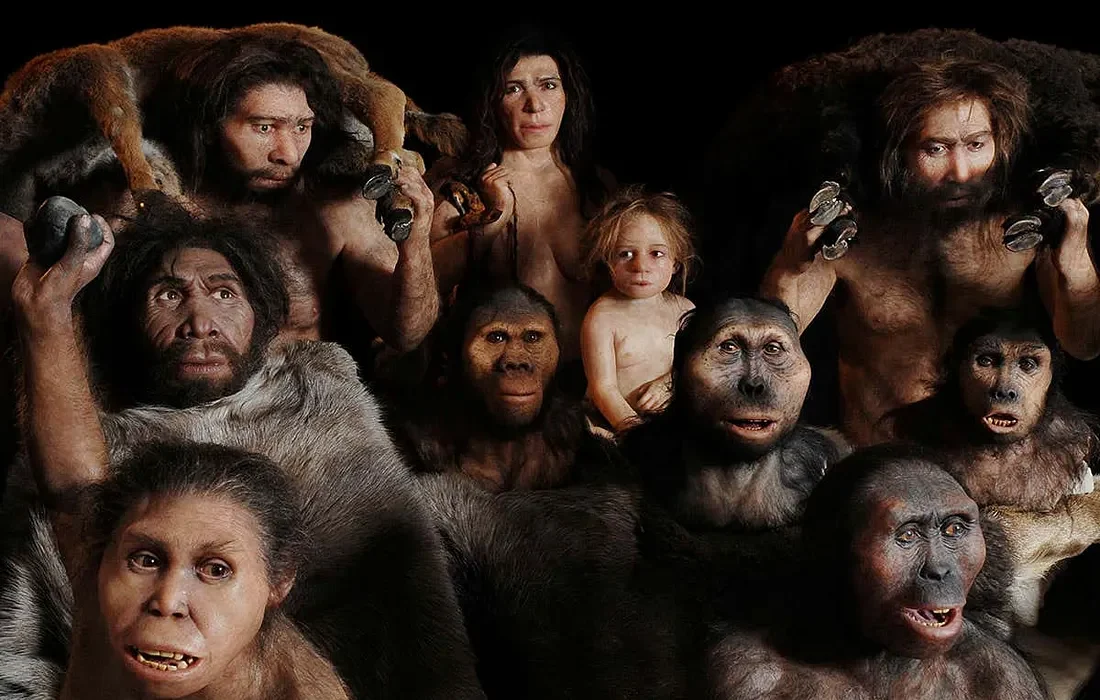Tidal forces are among the most subtle yet powerful phenomena in the cosmos. Though invisible, they sculpt the orbits of moons, the rotation of planets, the structure of rings, and even the internal composition of worlds. Every celestial body that experiences gravity also experiences tides, and their effects stretch across scales—from the gentle rise and fall of Earth’s oceans to the catastrophic shredding of moons that venture too close to their parent planets. Understanding tidal forces allows us to perceive gravity not as a static pull but as a dynamic, shaping agent of the universe itself.
The Nature of Gravity and the Origin of Tides
Gravity is the most fundamental force acting on large-scale structures in the universe. Every object with mass exerts an attractive force on every other mass, and it diminishes with distance according to Newton’s law of universal gravitation. However, when a massive body such as a planet or star exerts gravity on an extended object—like a moon or another planet—the near side of the object feels a stronger pull than the far side. This difference in gravitational strength creates a stretching effect known as a tidal force.
Tidal forces arise because gravity is not uniform across space. They are essentially the gradient of gravitational acceleration—the rate at which gravity changes with distance. The closer one part of an object is to the source of gravity, the stronger the pull it experiences, leading to differential acceleration. This uneven pull stretches the object along the direction of the gravitational source and compresses it along perpendicular directions.
In mathematical terms, tidal force is related to the second derivative of the gravitational potential. In practical terms, it manifests as a stress or deformation within an extended body caused by the varying strength of gravity across its volume. This deformation can be elastic, like the bulging of Earth’s oceans under the Moon’s influence, or destructive, like the disintegration of a comet that ventures too close to a planet.
Tidal Forces in the Earth–Moon System
The most familiar example of tidal forces occurs right here on Earth. The Moon’s gravity pulls more strongly on the side of Earth closest to it, creating a bulge in the oceans facing the Moon. Simultaneously, the far side of Earth, being farther from the Moon, experiences a slightly weaker gravitational pull. This causes another bulge on the opposite side due to the inertia of the rotating Earth–Moon system. As Earth rotates, these bulges move relative to its surface, producing the rhythmic rise and fall of ocean tides.
However, the effects of tidal forces extend far beyond the movement of water. They influence Earth’s rotation, slowing it gradually over geological time. This process, known as tidal braking, transfers angular momentum from Earth’s spin to the Moon’s orbit, causing the Moon to drift slowly away from Earth at a rate of about 3.8 centimeters per year. This ongoing exchange of energy and momentum is a direct consequence of tidal interactions.
The result is a fascinating dynamic equilibrium: Earth’s rotation slows while the Moon’s orbit expands. If this process continues, Earth will eventually rotate at the same rate that the Moon orbits—a condition known as tidal locking. At that point, one side of Earth will permanently face the Moon, just as one hemisphere of the Moon already always faces Earth.
The Concept of Tidal Locking
Tidal locking is one of the most significant outcomes of tidal evolution. When two bodies interact gravitationally over long timescales, the tidal forces deform them into slightly elongated shapes aligned toward each other. As the deformed body rotates, friction within its interior dissipates energy, gradually synchronizing its rotation period with its orbital period.
The Moon is a classic example. Billions of years ago, it likely rotated faster, showing different faces to Earth. Over time, internal friction from the repeated flexing caused by Earth’s tides slowed the Moon’s spin until it matched its orbital period. Now, the same lunar hemisphere always faces Earth—a state of synchronous rotation.
This phenomenon is not unique to the Moon. Most of the major moons in our solar system are tidally locked to their parent planets. Mercury, too, is partially locked with the Sun in a 3:2 resonance: it rotates three times for every two orbits. Tidal locking can occur in exoplanetary systems as well, especially for planets orbiting close to their stars. Many “hot Jupiters” and terrestrial exoplanets likely present the same face to their star, resulting in one hemisphere of perpetual daylight and another of endless night.
Tidal Heating and Internal Friction
When a celestial body is not perfectly spherical or its orbit is slightly eccentric, the tidal forces acting upon it vary over time. This continual flexing generates internal friction, which converts orbital energy into heat—a process known as tidal heating. This mechanism can profoundly affect the geology and potential habitability of moons and planets.
A striking example is Jupiter’s moon Io, the most volcanically active world in the solar system. Io’s orbit is slightly elliptical due to gravitational interactions with its neighboring moons, Europa and Ganymede. As Io moves closer to and farther from Jupiter during its orbit, it experiences immense variations in tidal stress. The resulting flexing and internal friction heat its interior, driving continuous volcanic eruptions that resurface the moon with molten lava.
Similarly, Saturn’s moon Enceladus exhibits geysers that spew water vapor and ice into space, powered by tidal heating generated through gravitational interactions with Saturn and neighboring moons. This process not only sustains geological activity but also creates the material that replenishes Saturn’s E ring.
Tidal heating is not limited to moons. It can play a crucial role in maintaining subsurface oceans in icy worlds and influencing the climate and evolution of exoplanets. For instance, a tidally locked exoplanet close to its star could experience significant internal heating, affecting its magnetic field, tectonics, and atmosphere.
The Roche Limit and Gravitational Disruption
While tidal forces can heat and shape celestial bodies, they can also destroy them. When an object approaches too close to a massive body, the differential gravitational forces across it become so strong that they overcome the object’s self-gravity. This critical distance is known as the Roche limit, named after the French astronomer Édouard Roche who described it in the 19th century.
If a moon or comet crosses the Roche limit of a planet, it can be torn apart by tidal stresses. The fragments may then form a ring system around the planet or disperse into space. The dramatic disintegration of Comet Shoemaker–Levy 9 in 1992, as it passed within Jupiter’s Roche limit, provided a striking demonstration of this principle. The comet broke into a series of fragments that later collided with Jupiter, leaving visible scars in its atmosphere.
Rings themselves often exist within the Roche limit, where tidal forces prevent particles from coalescing into larger moons. Saturn’s magnificent rings, for example, lie well within its Roche limit, composed of countless icy particles that continually interact but never accrete into a single body. The delicate balance between gravitational cohesion and tidal disruption maintains the rings’ structure over immense timescales.
Tidal Forces and Planetary Rings
Planetary ring systems are among the most visually stunning manifestations of tidal dynamics. They are composed of countless particles, ranging in size from microscopic dust to boulders, all orbiting in harmony within the Roche zone of their parent planet. The interplay of tidal forces, collisions, and resonances shapes their structure and longevity.
Saturn’s rings are the most prominent, but all the giant planets—Jupiter, Uranus, and Neptune—possess rings, albeit much fainter. These rings may have originated from the tidal breakup of a moon or comet that ventured too close to the planet, or from material left over after moon formation. Once formed, tidal forces act continuously to maintain the ring’s flat, thin configuration, as vertical motion is damped out by the planet’s gravitational gradient.
Gravitational resonances between ring particles and moons create intricate patterns such as gaps, waves, and ringlets. The Cassini Division, a wide gap between Saturn’s A and B rings, results from a resonance with the moon Mimas. Similar resonant interactions sculpt the fine structure observed in other rings, revealing how tides and orbital mechanics intertwine to create beauty from chaos.
The Tidal Sculpting of Moons and Planets
Tidal forces not only affect orbits but also reshape the physical form of moons and planets. The mutual gravitational pull between two bodies can elongate them, producing permanent tidal bulges. Over time, these deformations can alter a body’s internal structure and even influence its evolution.
For instance, the icy moon Europa exhibits a smooth, fractured surface with very few impact craters, suggesting ongoing resurfacing driven by tidal stress. The flexing caused by its elliptical orbit around Jupiter fractures its icy crust, allowing subsurface water to rise and freeze, erasing older features. Beneath the surface, the same tidal energy likely keeps a vast global ocean in a liquid state, making Europa one of the most promising candidates for extraterrestrial life in the solar system.
On Earth, tidal forces also play a subtle role in shaping the planet’s rotation and internal dynamics. The friction generated by ocean tides dissipates energy as heat, affecting Earth’s angular momentum and gradually altering the length of the day. Over millions of years, this cumulative effect has slowed Earth’s rotation and increased the distance to the Moon.
Orbital Resonances and Long-Term Evolution
Tidal forces are deeply connected with orbital resonances, where the orbital periods of two bodies form a ratio of small integers. Such resonances amplify gravitational interactions, leading to complex and often self-sustaining dynamical systems.
The Galilean moons of Jupiter—Io, Europa, and Ganymede—are locked in a 1:2:4 resonance, meaning that for every orbit Ganymede completes, Europa completes two, and Io completes four. This configuration maintains their orbital eccentricities, ensuring continuous tidal heating and internal activity. Without resonance, their orbits would circularize over time, and tidal heating would diminish.
Resonances also play a role in shaping ring systems. Moons located at specific distances from the rings can clear gaps or create spiral density waves. These interactions demonstrate how tidal and orbital mechanics collaborate to sculpt the architecture of planetary systems.
Tidal Effects Beyond the Solar System
Tidal forces extend their influence far beyond our solar neighborhood. In exoplanetary systems, they govern the behavior of close-in planets that orbit their stars at blistering speeds. Many of these worlds, known as “hot Jupiters,” experience extreme tidal forces that circularize their orbits and synchronize their rotations, locking one side in perpetual daylight.
Tidal interactions can also determine the fate of binary stars and planetary systems. In close binary systems, tides can transfer angular momentum between stars, altering their orbits and rotational rates. In some cases, the interaction becomes so intense that the stars share a common envelope or even merge, producing luminous events known as stellar mergers.
At a galactic scale, tidal forces shape entire galaxies. When two galaxies pass near each other, their mutual gravity stretches and distorts them, forming elongated tidal tails composed of stars and gas. These interactions can trigger bursts of star formation or even lead to complete galactic mergers, as seen in systems like the Antennae Galaxies.
The Role of Tidal Forces in Planetary Formation
Tidal interactions are not merely destructive—they are also creative. During the early stages of planetary system formation, tides help regulate orbital dynamics and stabilize young planetary orbits. Protoplanetary disks, composed of gas and dust, experience tidal interactions with forming planets, which in turn carve gaps and spirals in the disk. These tidal exchanges govern how material accretes and how planets migrate inward or outward.
In the later stages of evolution, tidal forces can stabilize multi-planet systems, locking them into resonant configurations that persist for billions of years. Such arrangements prevent catastrophic collisions and maintain long-term stability. In this way, tides indirectly influence the potential habitability of planetary systems by ensuring orbital harmony.
Tidal Forces and Habitability
Tidal effects play a profound role in determining whether a planet or moon can support life. Tidal heating can provide a vital source of energy, especially for worlds far from their parent stars. Moons like Europa and Enceladus owe their internal oceans and potential habitability to tidal heat. Without it, they would be frozen solid.
However, excessive tidal heating can also render a world inhospitable. Io’s intense volcanism, while geologically fascinating, creates conditions too extreme for life as we know it. The balance between heating and cooling is therefore crucial. Similarly, tidal locking can create climatic extremes, with one hemisphere scorched and the other frozen. Yet, even in such scenarios, atmospheric or oceanic circulation could moderate temperatures, preserving habitable zones along the terminator—the boundary between day and night.
The study of exoplanets has revealed that many potentially habitable worlds orbit red dwarf stars, where tidal locking is likely. Understanding how tides affect their climates, atmospheres, and magnetic fields is essential to assessing their habitability. Tidal forces, therefore, are not just mechanical agents but vital determinants of life’s potential in the cosmos.
The Mathematics of Tidal Forces
At its heart, the physics of tidal forces can be expressed through Newtonian and relativistic frameworks. In Newtonian mechanics, the differential gravitational acceleration across a body of radius ( r ) due to a massive object of mass ( M ) at distance ( d ) is approximately
[
\Delta g \approx \frac{2GM r}{d^3}
]
where ( G ) is the gravitational constant. This equation shows that tidal forces decrease rapidly with distance, following an inverse cube law. Thus, doubling the distance reduces the tidal effect by a factor of eight.
In general relativity, tidal forces emerge naturally from the curvature of spacetime. The difference in gravitational potential between two nearby points reflects the variation in spacetime curvature, leading to geodesic deviation—the tendency of nearby free-falling particles to accelerate relative to each other. Tidal effects, therefore, can be viewed as the manifestation of spacetime curvature gradients.
This relativistic interpretation becomes crucial near massive, compact objects like black holes. Close to a black hole, tidal forces become extreme, capable of stretching objects into elongated streams—a process poetically termed “spaghettification.” Such events illustrate that tidal phenomena are not limited to planetary systems but permeate the universe’s most extreme environments.
Tidal Disruption Events and Black Holes
In the vicinity of a black hole, tidal forces reach their ultimate intensity. When a star ventures too close to a supermassive black hole, the differential gravitational pull across it can exceed the star’s self-gravity, tearing it apart in a spectacular tidal disruption event (TDE). The stellar debris forms an accretion disk around the black hole, emitting intense radiation observable across vast cosmic distances.
TDEs provide astrophysicists with a unique window into the behavior of matter under extreme gravity. They reveal the scale and structure of black hole tidal fields and contribute to our understanding of accretion dynamics and relativistic jet formation. Even at these cosmic scales, the same fundamental physics that governs Earth’s ocean tides remains at play—gravity’s uneven pull shaping matter across space and time.
The Long-Term Fate of Tidal Systems
Over astronomical timescales, tidal interactions profoundly alter the architecture of planetary systems. Orbits evolve, rotations slow, and energy dissipates. Eventually, many systems reach a state of tidal equilibrium in which rotational and orbital periods synchronize, and further evolution ceases.
In the Earth–Moon system, this equilibrium is billions of years away, but in other systems, it has already been achieved. Close-in exoplanets orbiting red dwarfs are likely tidally locked, presenting stable but extreme environments. In binary stars, tidal forces can synchronize both components, leading to circular orbits and mutual tidal bulges that remain fixed in space.
However, tidal evolution can also lead to instability. In some cases, tidal interactions cause orbital decay, drawing a moon or planet gradually inward. If it crosses the Roche limit, it may disintegrate, forming rings or being consumed by its parent body. The delicate balance between stabilization and destruction defines the dynamic lifespan of every tidal system in the universe.
The Universal Language of Tides
Tidal forces represent one of the most universal expressions of gravity. They are the same whether stretching the oceans on Earth, heating the interior of a distant moon, or tearing a star apart near a black hole. Their manifestations differ in scale and consequence, but the underlying principle remains constant: gravity’s variation across space creates motion, heat, and change.
Every interaction between extended bodies in the cosmos carries the imprint of tides. They are the silent sculptors of celestial mechanics, governing not only the rhythm of our oceans but also the architecture of planetary systems and galaxies. Through tides, gravity becomes more than a force of attraction—it becomes a creative power, shaping the very structure of the universe.
Conclusion
Tidal forces are the unseen architects of cosmic evolution. They stretch, heat, synchronize, and sometimes destroy the bodies caught in their grasp. From the gentle pull that governs Earth’s tides to the immense gravitational gradients near black holes, tides reveal gravity’s true dynamism.
They teach us that the universe is not static but continuously reshaped by the interplay of motion and mass. Through the study of tides, we gain insight into the interconnectedness of celestial bodies and the deep unity of physical law. Whether in the shimmering rings of Saturn, the volcanic fury of Io, or the tranquil rise of Earth’s oceans, the same principle echoes: gravity, unevenly felt, becomes the sculptor of worlds.
In that sense, tidal forces are more than a scientific concept—they are a poetic testament to the way the cosmos breathes, flexes, and evolves. Every moon that turns, every planet that spins, every star that merges owes part of its story to the quiet, relentless pull of tides.






